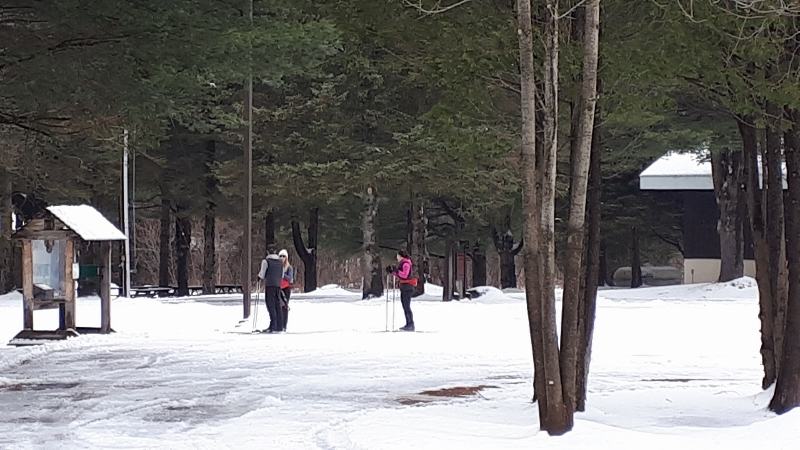Enjoying nature doesn’t stop in the winter.
Voyageur Provincial Park, which covers over 3,600 acres/1,400 hectares of land and water between Chute-à-Blondeau and Pointe-Fortune, is accessible year-round. The campgrounds and beach areas are closed of course, but people wanting to enjoy nature and fresh air are allowed in the park during the daylight hours.
The park has nearly 20 kilometres of cross-country ski trails. However, their availability depends on the weather. Skiers are required to pay for a day-use pass if the trails are open. They are available from the self-serve pay station next to the park office.
When the trails are closed, and the gate is closed at the park entrance on Front Road, visitors can still park their cars and walk in. During the week when staff are working at the park office, the gate on front road is shut and locked at 4pm, so anyone who drives into the park should make sure they are out by that time.
Depending on which direction they are traveling, Voyageur Provincial Park is the first or last exposure to Ontario’s outdoors tourists get because the park is located on the provincial boundary.
The park’s history goes back to 1943 when the Ontario and Québec governments reached an agreement on how to divide up the remaining sites for hydroelectric dams on the Ottawa River. Hydro-Québec built the Carillon dam between 1959 and 1964. It raised the water level by 62 feet/19 metres at Carillon and 9 feet/2.7 metres at Grenville. The Long Sault Rapids disappeared and the 10 square mile/26 square kilometre Lac Dollard des Ormeaux was formed.
The park was created under an Ontario government regulation in 1966 and it officially opened to visitors in 1971. It was originally called Carillon Provincial Park, but the name was changed in 1994 because of confusion with the name of the Carillon municipal park and the Carillon National Historic Site across the river.
The park is also near the site of the Fight at the Long-Sault, also called the Battle of Long-Sault.
On May 2, 1660, French military officer Adam Dollard des Ormeaux, with 16 French soldiers, and 40 Indigenous Huron people, waylaid 200 Onondaga hunters who were their enemies. The Onondaga, along with 500 Mohawks and Oneida, completely wiped out Dollard des Ormeaux’s party and only 19 Iroquois were killed.
That spring, the Iroquois did not harass the French settlements on the St. Lawrence like they usually had and for the first time in several years, the French were able to ship their furs from places in the north and west to Montreal.
Dollard des Ormeaux was regarded as the saviour of New France. He died at Carillon on May 21, 1660.
To find out if the cross-country ski trails at Voyageur Provincial Park are open, check the Ontario Parks ski conditions website before heading out. Or, call the park for recorded information at 613-674-2825.




